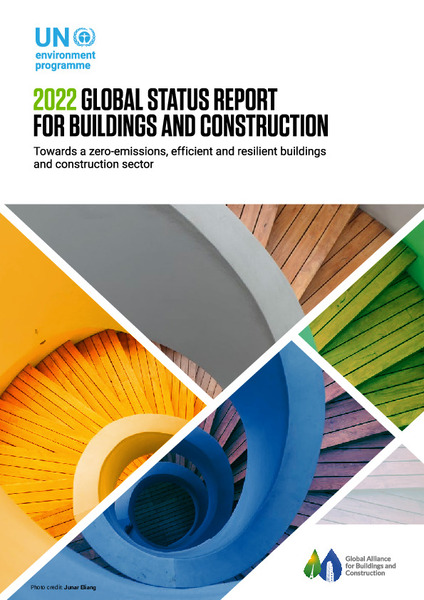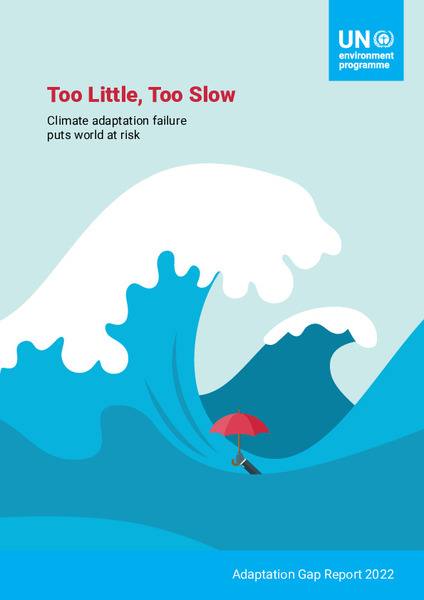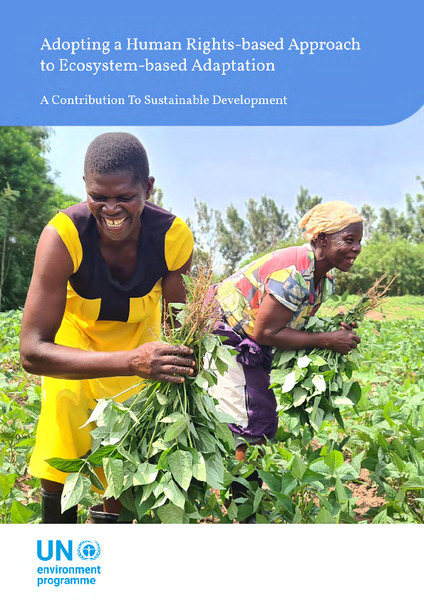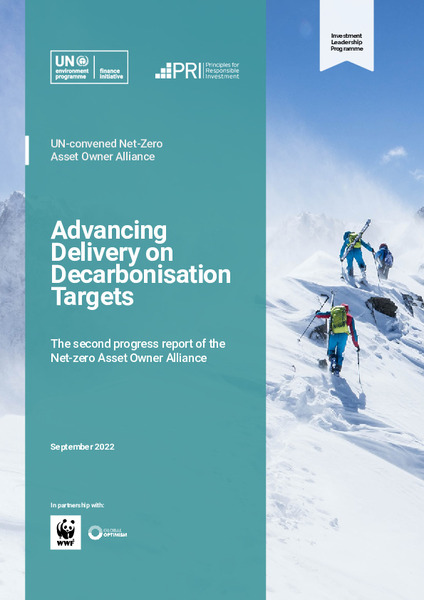Browsing UNEP Publications Pre-2023 by SDGs "SDG 13 - Climate Action"
Now showing items 1-20 of 372
-
10 years after Rio: the UNEP assessment - executive summary
(UNEP, 2002)This report documents industry's progress unfinished business and future challenge in implementing agenda 21. -
2019 Global Status Report for Buildings and Construction: Towards a Zero-emissions, Efficient and Resilient Buildings and Construction Sector
(2019)The buildings and construction sector accounted for 36% of final energy use and 39% of energy and process-related carbon dioxide (CO2) emissions in 2018, 11% of which resulted from manufacturing building materials and ... -
2022 Global Status Report for Buildings and Construction: Towards a Zero‑emission, Efficient and Resilient Buildings and Construction Sector
(2022-11)Decarbonizing the buildings sector by 2050 is critical to delivering these emission cuts – and to addressing the wider triple planetary crisis of climate change, nature and biodiversity loss, and pollution and waste. ... -
21 Issues for the 21st century: results of the UNEP foresight process on emerging environmental issues
(UNEP, 2012)The UNEP foresight report contains a description of the 21 emerging environmental issues identified through the UNEP Foresight Process. The process resulted in a list of 21 emerging environmental issues tagged 21 Issues ... -
A case for climate neutrality: case studies on moving towards a low carbon economy United Nations Environment Programme
(2009)The publication presents concrete case studies from within the UNEP-led Climate Neutral Network (CN Net) that showcase concrete initiatives undertaken by diverse actors in a variety of sectors on moving towards climate ... -
Action on ozone 2000
(UNEP, 2000)This is the fourth edition of Action on Ozone produced by UNEP. The scientific evidence clearly shows the beginnings of a fall in the concentrations of the dangerous chemicals in the lower atmosphere which is now being ... -
The Adaptation Finance Gap Report 2016
(2016)The report builds on a 2014 assessment by the United Nations Environment Programme, which laid out the concept of adaptation gaps and outlined three such gaps: technology, finance and knowledge. Like the 2014 report, the ... -
The Adaptation Gap Report 2017: Towards Global Assessment
(2017-11)The report explores key opportunities and challenges associated with assessing progress on adaptation at the global level. The report synthesizes information relevant for the ongoing work under the United Nations Framework ... -
The Adaptation Gap Report 2018
(2018-12)The Adaptation Gap Reports focus on providing policy-relevant information to support such efforts. The focus of the 2018 report is dual: The first part examines the gaps that exist in a number of areas that are central to ... -
Adaptation Gap Report 2020
(2021-01)In the lead-up to the Global Stocktake in 2023, the AGR aims to address three important questions: What are we doing today to adapt? To what extent are we currently reducing climate risks? To what extent will our adaptation ... -
Adaptation Gap Report 2021: The Gathering Storm - Adapting to Climate Change in a Post-pandemic World
(2021-11)This year’s AGR updates and expands the analysis begun in the 2020 edition of the report by providing information of direct relevance to the UNFCCC Global Stocktake: ▶ Consolidated criteria for assessment of adaptation ... -
Adaptation Gap Report 2022: Too Little, Too Slow - Climate Adaptation Failure Puts World at Risk
(2022-11)Climate change is landing blow after blow upon humanity, The international community must urgently reduce greenhouse gas emissions through a transformation of energy, industry, transport, food systems, financial systems ... -
Adaptation Gap Report: A Preliminary Assessment Report
(2014)This report was published in response to requests made to the United Nations Environment Programme (UNEP) by different parties to provide a preliminary assessment of adaptation gaps to complement information presented in ... -
Adaptation to Climate-change Induced Water stress in the Nile Basin - A vulnerability assessment report
(UNEP, 2013)The Nile River Basins rich ecological resources are vital to the 238 million people living in the region. The basins natural environment is the ultimate source of its economic activities (production and consumption) and ... -
Adopting a Human Rights-based Approach to Ecosystem-based Adaptation: A Contribution to Sustainable Development
(2022-11)Human rights-based approaches (HRBAs) seek to analyse inequalities that lie at the heart of development problems, and redress discriminatory practices and unjust distributions of power that impede development progress. ... -
Advancing Delivery on Decarbonisation Targets: The Second Progress report of the Net-zero Asset Owner Alliance
(United Nations Environment Programme, 2022-09)The Alliance’s activities are characterised by a combination of ambition, leadership, and an abiding commitment to collaboration. As this report reveals, recent years have witnessed a growing number of asset owners embrace ... -
Africa Environment Outlook 2: our Environment, our wealth
(UNEP, 2006)The main focus of the AEO-2 report is on sustainable livelihoods and the environment. The report profiles Africa's environmental resources as assets for the continent's development. It highlights the potential of the ... -
Africa Environment Outlook 3: our environment, our health
(UNEP, 2013)The Third Africa Environment Outlook (AEO-3), analyses the importance of, and interlinkages between, health and environment and the opportunities and synergies that might be derived from intensified collaboration between ... -
Africa Environment Tracking: issues and developments
(UNEP, 2005)When the first Africa Environment Outlook (AEO) report was presented to the African Ministerial Conference on Environment (AMCEN) in 2002 it was adopted by the Ministers as a tool for African policy makers to use in the ... -
African Environment Outlook-3 (AEO-3) - Summary for policy makers
(United Nations Environment Programme, 2013)The current issue (AEO-3) focuses on the linkages between environment and health, largely because of the recognition that environmental factors contribute about 28 per cent of Africa's disease burden. This disease burden ...




















